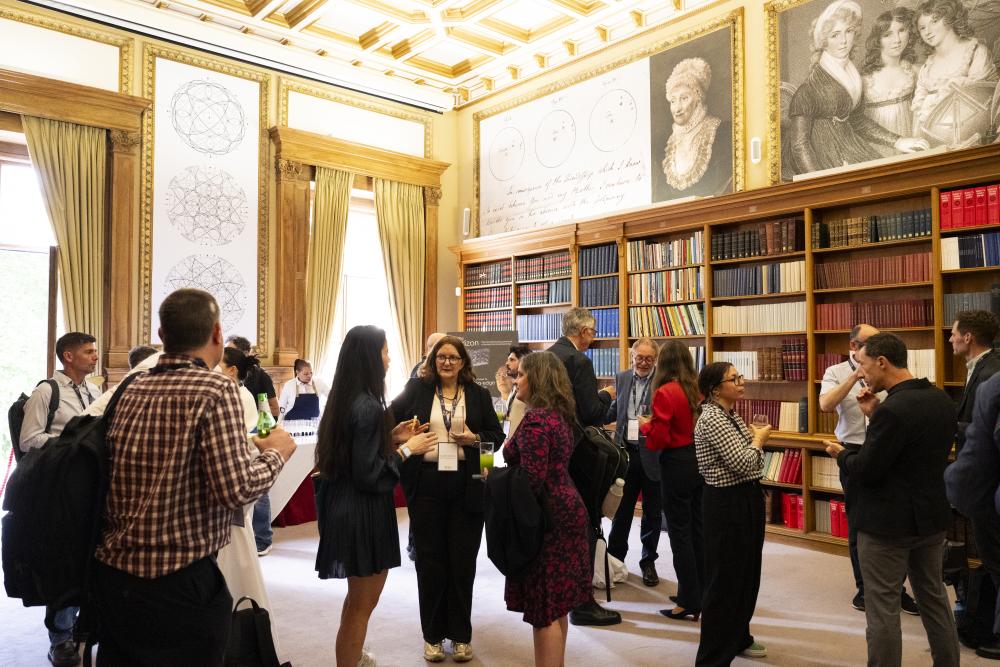On the Horizon: the translational potential of extrachromosomal DNA
We have access to the most innovative science in cancer, but we need collaboration from the entire sector to translate it into patient benefit. We launched our On the Horizon event series to connect industry and investors with that science. Read more to learn about the subject of our first event: the translational potential of extrachromosomal DNA.
- 19 June 2025
- Tim Bodicoat, Science Writer
- 5 minute read
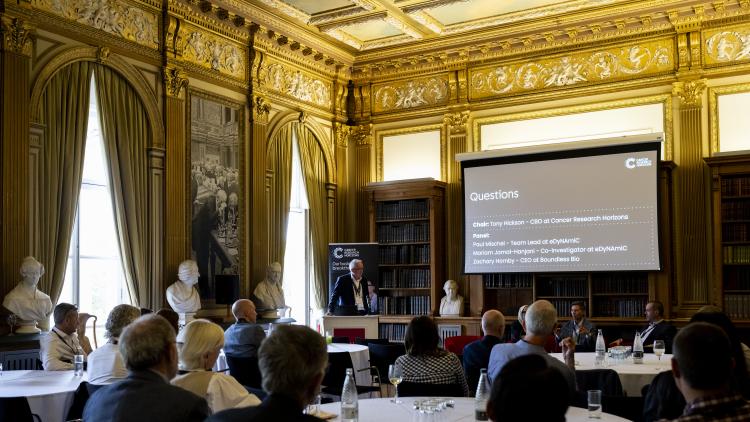
Most of our DNA is bound into our chromosomes, the stable structure ensuring that our genetic information is copied correctly as cells divide. However, some DNA can become loose from chromosomes, in scattered circles that behave abnormally as cells divide. This is extrachromosomal DNA (ecDNA), and it’s been hiding in plain sight for decades as a key driver of the fastest-growing cancers.
Until recently, we knew relatively little about the origins, evolution and clinical impact of ecDNA. However, that is changing. As we uncover more about ecDNA, its translational potential is becoming clear. If we could harness our emerging insights into this cancer-specific biology, we may be able to open a new frontier in cancer care.

Embracing what’s coming next
You’re unlikely to hear ecDNA mentioned in a biotech pitch. You won’t have seen it in many pharmaceutical pipelines. The industry tends to cluster around established areas, with the same targets and the same mechanisms, and ecDNA has not yet been established as a drug target. But to revolutionise the industry, we need to embrace what’s coming next rather than what’s already trending.
That’s why Cancer Research Horizons launched the On the Horizon event series: to connect people working in biotech, pharma and investment with the latest innovations in cancer research that have the potential to transform people’s lives.
The inaugural event on the translational potential of ecDNA featured talks from Paul Mischel, Stanford University, and Mariam Jamal-Hanjani, UCL, from the Cancer Grand Challenges team eDyNAmiC. We also heard from Zach Hornby, CEO of Boundless Bio, which was founded in 2018 by several eDyNAmiC members and is the first company to take ecDNA-directed therapies into the clinic.
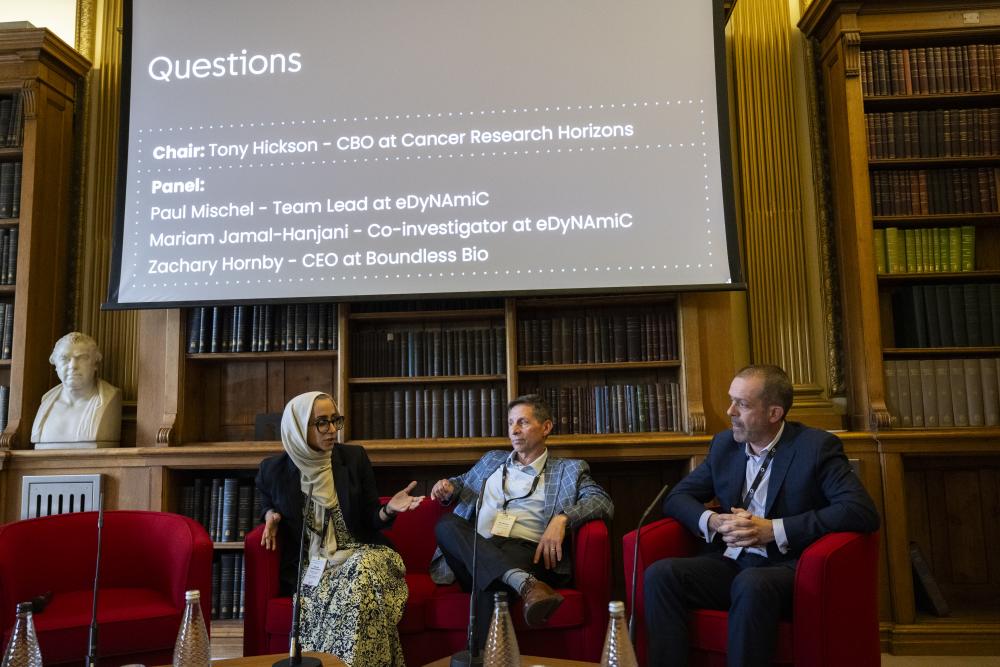
The grand challenge of ecDNA
Researchers first observed ecDNA in cancer cells in 1965, but it took decades for its importance in the disease to become apparent. By 2020, it had emerged as a driver of tumour evolution and resistance, but there were still many unanswered questions. How does it form? How does it evade the immune system? What are its vulnerabilities?
That was when Cancer Grand Challenges, the initiative co-founded by Cancer Research UK and the National Cancer Institute, set the following challenge to the global research community: understand the biology of ecDNA generation and action, and develop approaches to target these mechanisms in cancer. The team selected to take on that challenge was eDyNAmiC, led by Paul Mischel.
In November 2024, eDyNAmiC researchers and their colleagues published three Nature papers simultaneously that pushed the field forward immeasurably, establishing ecDNA as a hallmark of faster-growing cancers, uncovering how it resists treatment, and targeting its weak point.
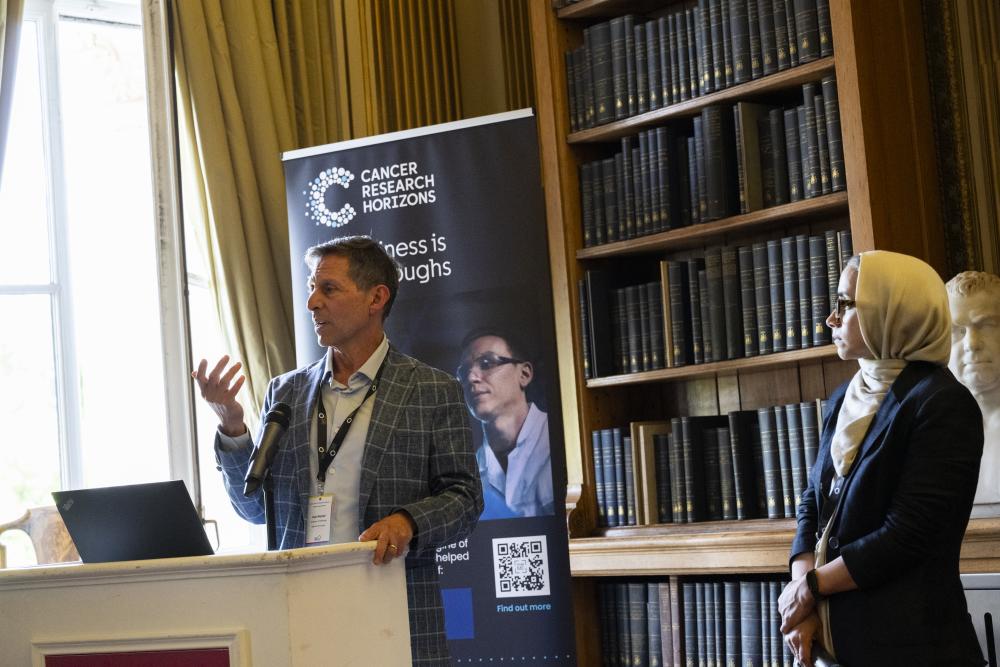
“Leaders across many scientific disciplines have come to recognise that ecDNA is one of the most important discoveries in cancer in decades,” said Paul at the On the Horizon event. “Now the real challenge is how can we go from what we’re discovering about this fundamental biology to making a difference for patients with cancer.”
“We need the support of Cancer Research Horizons and others to press on and translate much faster because our patients are relying on us,” said Mariam.
The role of ecDNA in cancer
The circular shape of ecDNA enables high transcriptional activity, which increases the amount of oncogene expression to drive tumour growth. Because ecDNA segregates unevenly during cell division, the number of oncogenes can increase exponentially from the mother cell to the daughter cells. This is known as oncogene amplification, and ecDNA is a primary source of it.
Cancers with oncogene amplifications grow faster and evolve more rapidly than other cancers, making them much harder to treat. “Trying to treat ecDNA-enabled tumours with targeted therapies alone is like playing a game of Whac-A-Mole,” said Zach. “If you suppress one oncodriver, a new one quickly arises on ecDNA.”
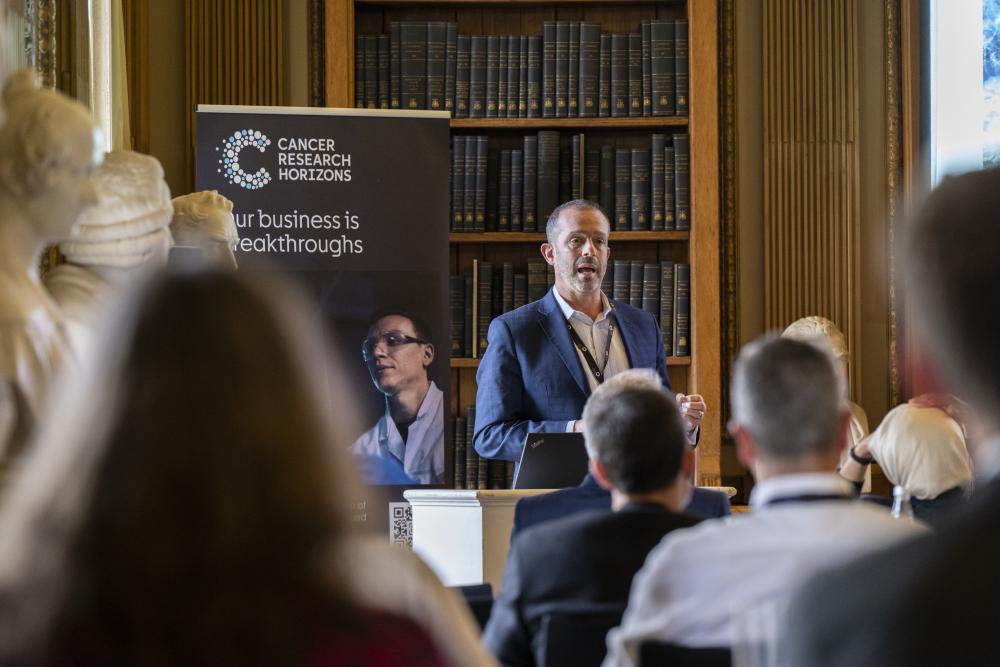
From studying nearly 15,000 patients with 39 different tumour types, eDyNAmiC found that 17% of samples contained ecDNA. Other studies have shown that ecDNA frequency increases after treatment, and patients whose tumours harbour ecDNA have worse clinical outcomes, including survival.
To help these patients, we need to find treatments that will disable ecDNA functionality in cancer cells. These treatments need to target the cellular enablers of ecDNA formation and function, as opposed to exclusively focusing on individual ecDNA-enabled oncodrivers. “What you need to do is unplug the ecDNA machinery,” said Zach.
Fortunately, eDyNAmiC was created to help tackle this challenge.
Targeting the weak points
The high transcriptional activity of ecDNA creates elevated replication stress. The cancer cells work overtime to copy genes, leading to DNA damage that they need to repair to survive. Checkpoint kinase 1 (CHK1) is a master regulator of the cells’ DNA damage response to replication stress and is activated more frequently in ecDNA-positive cancers. Blocking this protein could stop the repair that ecDNA needs to survive. That led researchers to identify CHK1 inhibitors as one potential way to interfere with the ecDNA machinery.
To maintain and perpetuate ecDNA, cancer cells need more of the raw materials required to build DNA. RNR is an enzyme that’s essential for one of the key pathways for synthesising the building blocks of DNA, particularly in cancer cells; inhibiting it can disrupt the supply of these materials and prevent ecDNA from rebuilding.
Boundless Bio is testing its clinical-stage CHK1 inhibitor, BBI-355, alongside its clinical-stage RNR inhibitor, BBI-825, as a novel combination strategy in patients with oncogene-amplified tumours.
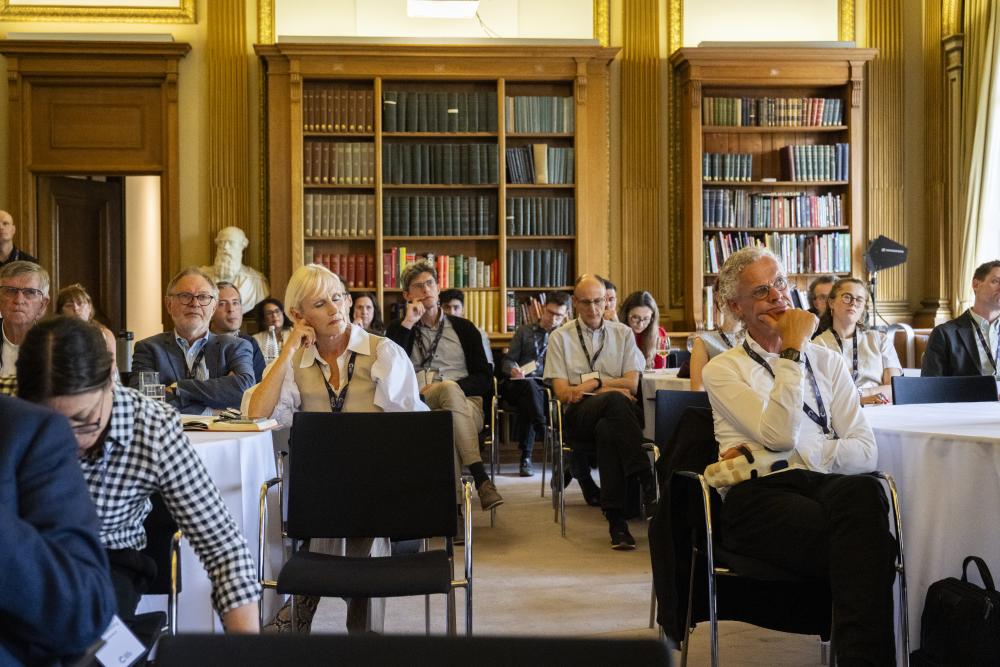
This progress is promising, but there’s still more to discover in ecDNA, and more applications to identify. Mariam believes that ecDNA could be used in diagnostics as well as treatment.
“We know that ecDNA at diagnosis could predict poor outcomes in early-stage disease,” she said. “It could be used to stratify high- and low-risk patients. But also, if we understand more about mechanisms of resistance, it might mean we’ve got something ready at the go for when these patients will inevitably develop resistance.”
Zach and Paul both agreed that we’re at the beginning of discovering what this field could do for patients. “We’re entering what I hope will be a golden era of finding low-hanging fruit for ecDNA,” said Paul.
We’re excited to see how this golden era progresses.
What else is on the horizon?
With more than 4,000 researchers in Cancer Research UK’s network, 12 teams currently taking on active Cancer Grand Challenges, and over 80 early-stage start-ups in our portfolio, Cancer Research Horizons has access to the most innovative science in cancer, from novel targets to the nervous system, the dark proteome to AI-driven diagnostics.
By showcasing this to industry and investors, the On the Horizon event series will create a meeting point for the life sciences ecosystem, catalysing the collaboration required to beat cancer.
To stay informed about upcoming On the Horizon events, sign up for exclusive updates and early announcements here.
